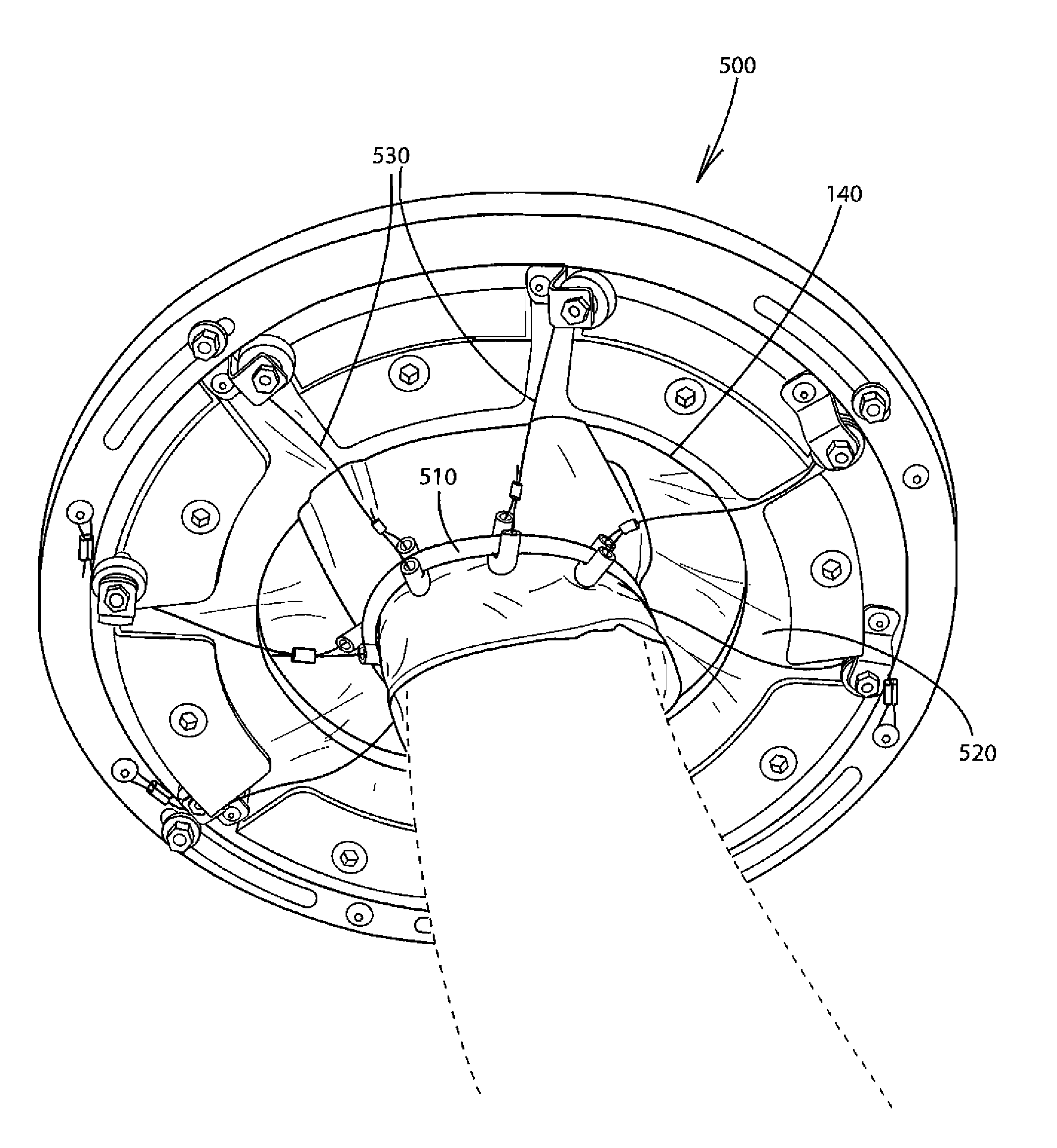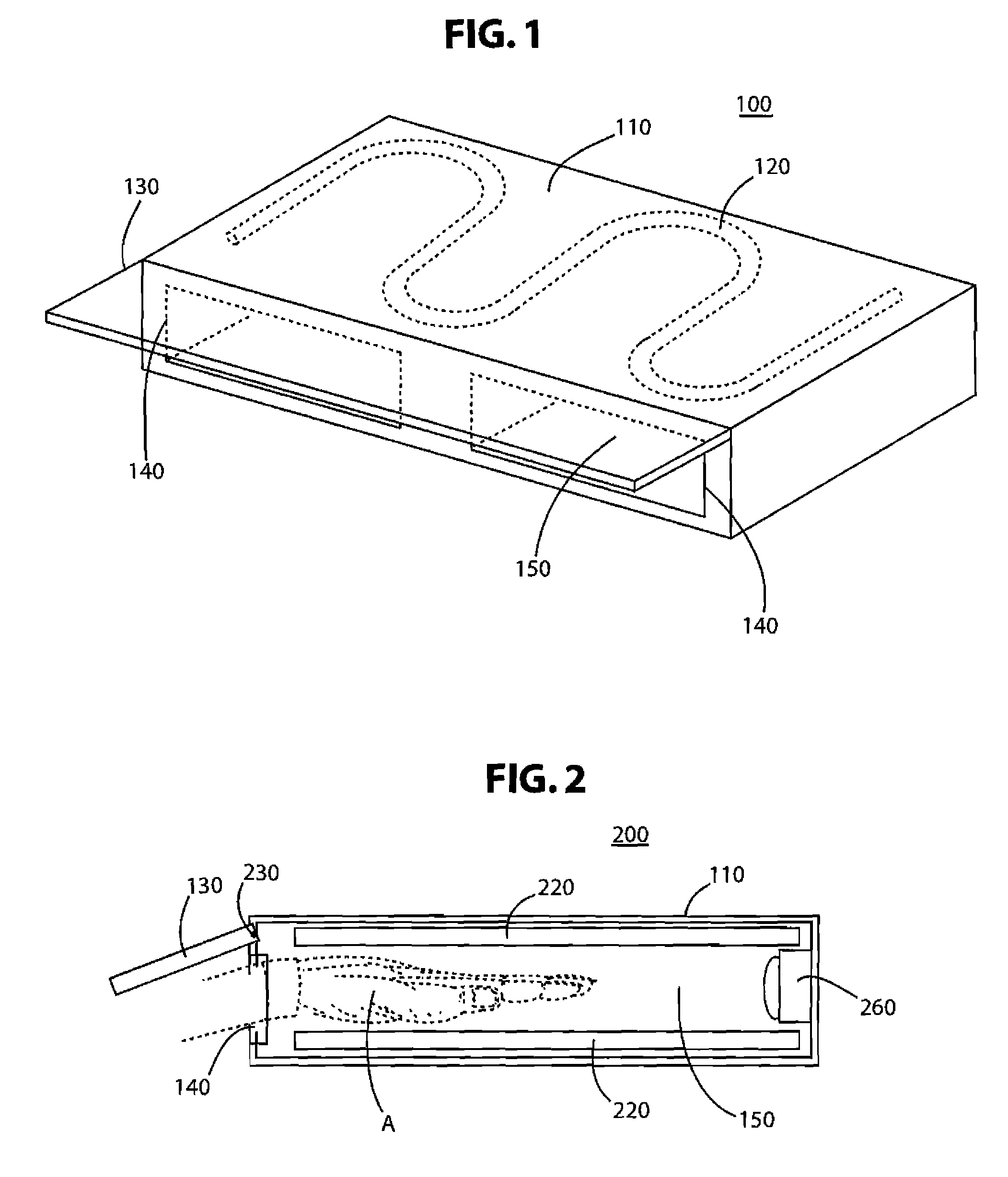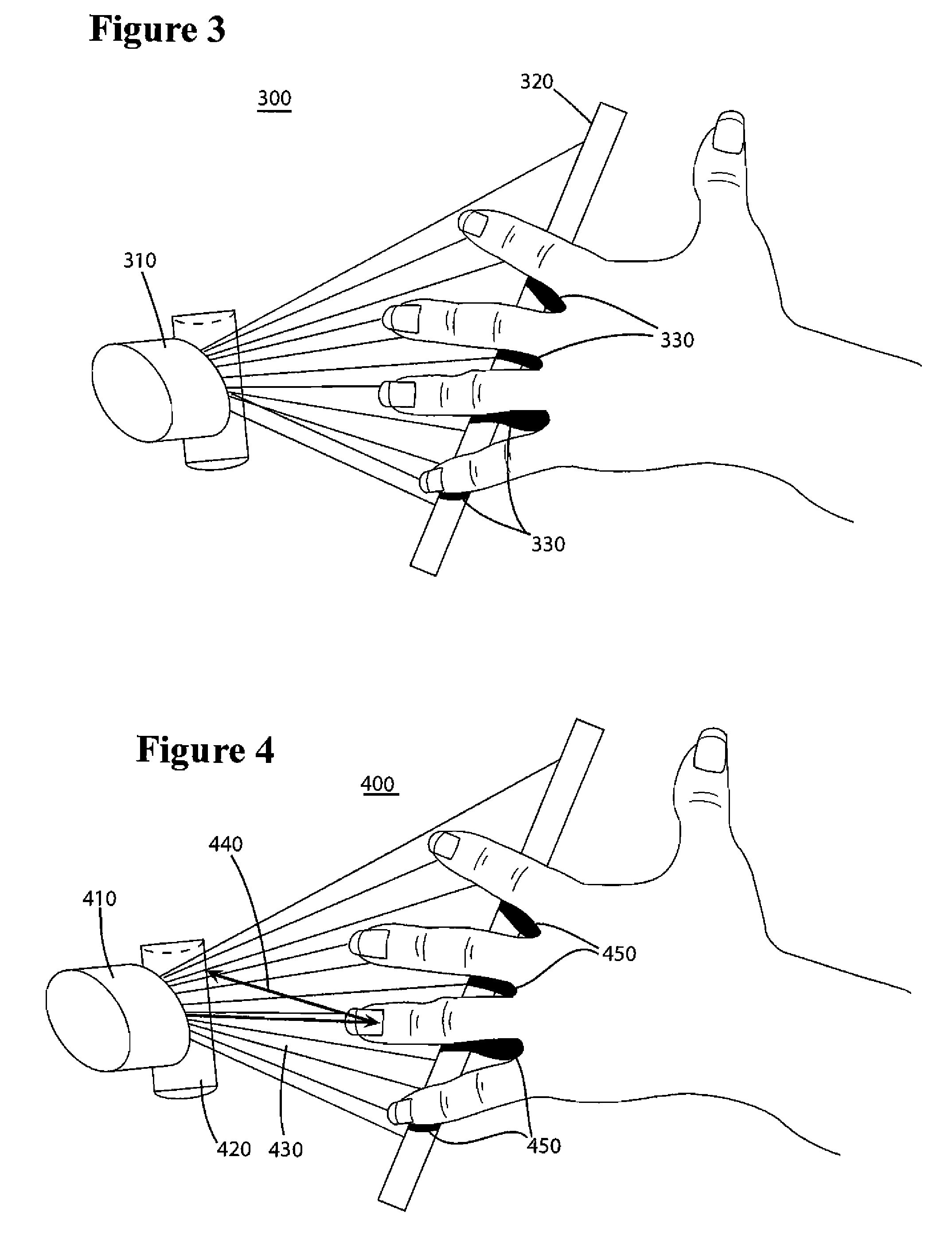Hand sanitizer/sterilizer
a hand sanitizer and sterile technology, applied in the field of germicidal devices, can solve the problems of not covering 100% of the area to be sanitized, not always complete or assured, and not always possible, so as to reduce the exposure to uv-c radiation everywhere on the glove, prolong the exposure to bare skin, and minimize the effect of shadows
- Summary
- Abstract
- Description
- Claims
- Application Information
AI Technical Summary
Benefits of technology
Problems solved by technology
Method used
Image
Examples
Embodiment Construction
[0032]By way of overview and introduction, the present invention comprises a germicidal device that can provide the rapid and effective sterilization of hands, and other bodily extremities, in many locations including schools, childcare centers, hospitals and other medical offices, restaurants and kitchens, bathrooms, supermarkets, homes, and public facilities. The germicidal device preferably includes an enclosure, such as a device, mounted to a wall or otherwise elevated, for example by a patient bed, table, stand or sink. The enclosure contains a radiation source configured to produce UV-C radiation preferably having a wavelength of about 253.7 nm. The enclosure further includes an opening (e.g., a slot) through which an extremity, such as hands, or hands and forearm, can be inserted into the device and exposed to the UV-C radiation thereby deactivating the pathogens on the surface of the user's hands. Optionally, the germicidal device can be used with uncovered bodily extremitie...
PUM
| Property | Measurement | Unit |
|---|---|---|
| wavelength | aaaaa | aaaaa |
| wavelength | aaaaa | aaaaa |
| exposure time | aaaaa | aaaaa |
Abstract
Description
Claims
Application Information
 Login to View More
Login to View More - R&D
- Intellectual Property
- Life Sciences
- Materials
- Tech Scout
- Unparalleled Data Quality
- Higher Quality Content
- 60% Fewer Hallucinations
Browse by: Latest US Patents, China's latest patents, Technical Efficacy Thesaurus, Application Domain, Technology Topic, Popular Technical Reports.
© 2025 PatSnap. All rights reserved.Legal|Privacy policy|Modern Slavery Act Transparency Statement|Sitemap|About US| Contact US: help@patsnap.com



